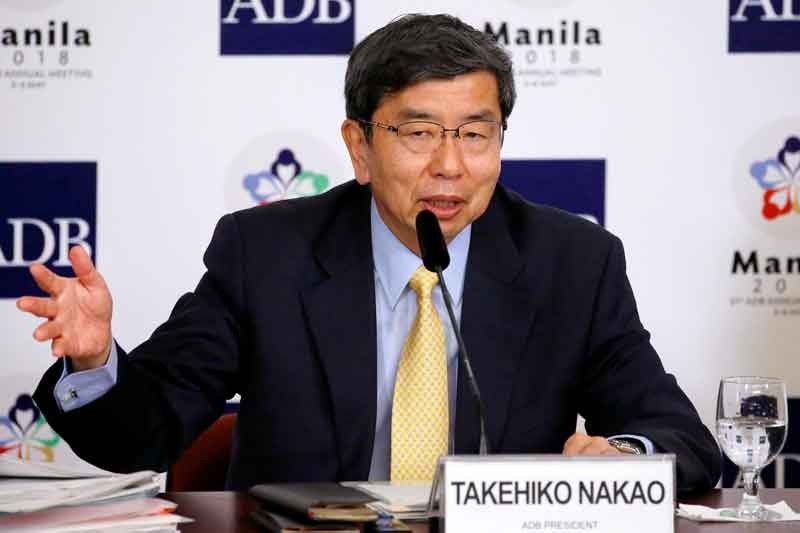Mindanao development high on ADB’s Philippines agenda

MANILA, Philippines — The broader development of the resource-rich, but security-challenged Mindanao is high on the Philippine agenda of the Asian Development Bank as it crafts its new long-term corporate strategy, ADB president Takehiko Nakao said yesterday.
ADB is preparing its Strategy 2030 for approval by the third or fourth quarter of the year. The bank said the current draft builds on extensive background work and stakeholder consultations undertaken since 2015.
Under the new long-term strategy, the multilateral development bank said it would expand its operations beyond eradicating poverty to help developing member countries “achieve greater prosperity” and inclusiveness of economic gains.
ADB said its future engagements would use “differentiated approaches to respond more appropriately to the changing needs of developing member countries (DMCs) and the varied nature of their developmental challenges.”
Nakao said the current administration has several agenda items for the economy aligned with Strategy 2030, among which is the thrust for rural development and energizing the economy of Mindanao.
“The Duterte government has several agenda which are aligned with our own ideas, first rural development, education and gender issues to empower women,” he said in a briefing yesterday.
“And we also want to invest more in Mindanao, because to sustain peace we need to develop Mindanao in a broader sense,” he added.
In December last year, ADB approved a $380-million loan to help the government improve the road network in the poorest areas of Mindanao.
The Improving Growth Corridors in Mindanao Road Sector Project seeks to improve 280 kilometers of national roads and bridges, most of which are in the Zamboanga peninsula. This is the first Mindanao-specific project to be granted financing by the ADB in 16 years.
Road systems covered by the project would be made climate-resilient though elevated pavements, enhanced slope protection and better drainage.
All roads covered would be geotagged and information would be accessible on the internet so the public can monitor the progress.
The core road systems covered by the project include the Alicia–Malangas, Tampilisan–Sandayong, and Lutiman–Guicam–Olutanga roads all in the Zamboanga Peninsula, said Jeffrey Miller, principal transport specialist at ADB’s Southeast Asia Department.
Nakao said the bank also sees the need to support infrastructure in the Davao region, a major economic hub in the south.
“We also support transport (development) in Davao,” he said.
Alongside rural development, the easing traffic congestion in Metro Manila and other major cities is also a priority in the provision of support for the Philippines under Strategy 2030.
“We need to support the Philippines’ metro areas, how to mitigate these traffic difficulties and how to support the railway projects,” said Nakao.
Education projects, he said, are also high on the agenda of the multilateral development bank for the Philippines as its DMCs are in dire need of upgrading the skills of their workers to preserve jobs growth amid rapid changes in technology and value chains.
“On the areas of education, on transitioning from school to job, which include technical and vocational training is an important part,” said Nakao.
- Latest
- Trending





























